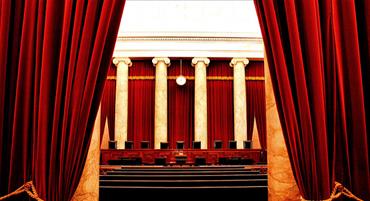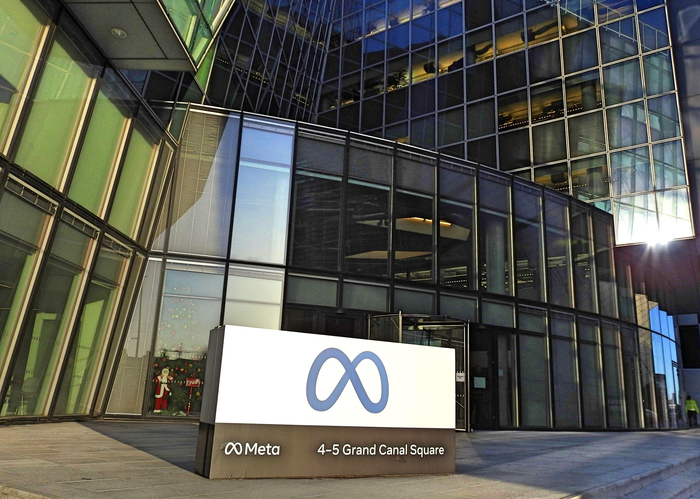Law360: Whistleblower Protections Are At Risk At The High Court

By Stephen Kohn
November 27, 2017.
On Nov. 28, 2017, the U.S. Supreme Court will hear argument in Digital Realty Trust v. Somers, a case that threatens every corporate compliance program in the United States. The issue seems straightforward on its face: Are internal whistleblowers protected, or do employees need to file a claim with the government to earn the legal title of being a “whistleblower”? But because the vast majority of employees currently report fraud internally, a ruling in support of Digital Realty will impact the reporting behavior of whistleblowers.
Stripping protections of employees who report violations of law to in-house managers will constitute the greatest setback for voluntary compliance programs since these programs were established in the mid-1980s. Thousands of employees will be at risk for losing their jobs simply because they alerted their supervisors to potential fraud or corporate misconduct.
The case arose in California after Digital Reality Trust’s Vice President Paul Somers reported possible securities violations to his company’s top managers. As is often the case, Digital Realty did not like the bad news, and fired Somers. Somers filed a complaint under the Dodd-Frank Act’s (DFA) anti-retaliation law. Digital defended its actions by claiming Somers’ disclosures to his managers were not protected, and argued that his case had to be dismissed as a matter of law.
According to Digital, to be protected under the DFA employees must report their fraud concerns directly to the U.S. Securities and Exchange Commission. Reports to a supervisor, or company’s compliance program, audit committee, attorneys or top managers simply did not pass muster. Paradoxically, Digital’s argues that that employees should ignore internal reporting procedures, and file fraud claims directly with the SEC, an outcome that most companies would dread. Why would any corporation want their employees to report fraud to government regulators, and not give the company a chance to investigate or correct the problem?
The Ninth Circuit rejected these arguments. This set up a split in the judicial circuits between the Second and Ninth Circuits (internal protected) and the Fifth Circuit (internal not protected). The Supreme Court will decide this issue.
Although the case arose under the DFA’s securities fraud law, its impact will be widespread. The statutory language relied upon by Digital to strip internal whistleblowers of their rights also exists in numerous other federal whistleblower laws, including the anti-retaliation provisions of the Commodity Exchange Act, the Clean Air Act, the Water Pollution Control Act, the Surface Mining Control and Reclamation Act, the Toxic Substances Control Act, and the major banking whistleblower laws, such as those covering credit unions, Federal Deposit Insurance Corporation-insured institutions, and monetary transactions.
Digital’s arguments defy all common sense. Why would a company want to discourage employees from raising concerns internally? Why would a company want to force employees to file complaints directly with the SEC in order to be covered under the DFA? From a regulatory perspective, Digital’s position is insupportable. During an extended rulemaking proceeding under the DFA, hundreds of corporations strongly urged the U.S. Securities and Exchange Commission (SEC) to require employees to report their fraud concerns internally, before they contacted the SEC. The SEC carefully weighed the benefits of internal reporting, and established rules that encouraged such conduct, while explicitly prohibiting retaliation against those who made such reports.
The reasons given by the SEC for protecting and encouraging internal reporting were to:
- “Allow companies to take appropriate actions to remedy improper conduct at an early stage”;
- “Allow companies to self-report”;
- “Avoid undermining internal compliance programs”;
- “Allow the Commission to preserve its scarce resources by relying upon corporate compliance programs.”
Why would Digital want to establish national precedent to undermine these objectives? The answer is clear. Digital wants an easy way to defeat whistleblowers in court. Because the overwhelming majority of whistleblowers raise concerns internally, corporations want to rely on this technicality to throw out whistleblower cases. Should Digital prevail, companies can simply inform the court that the whistleblower only raised concerns internally and have the case dismissed, regardless of the seriousness of the whistleblower’s disclosures, the financial harm suffered, or the strength of the evidence demonstrating retaliation.
Digital is not the first company to raise this defense. The issue before the Supreme Court first arose in 1974 under the Federal Mine Health and Safety Act. Like the DFA, the mine safety law created a broad federal regulatory scheme. Using language similar to the DFA’s definition of a whistleblower, the mine safety law protected employees who “filed” or “instituted” safety proceedings with the Mine Health and Safety Commission. Like Paul Somers, the miner reported his safety concerns to management, but did not file a formal complaint with the government. Like Somers, the miner was fired.
Judge Wilkey reasoned that internal reports were simply the “first step” in a report to the government, and thus must be fully protected. Judge Wilkey understood that miners were in “the best position to observe the compliance or noncompliance with safety laws” and that “sporadic federal inspections can never be frequent or thorough enough to insure compliance.” He understood that “miners who insist on health and safety rules being followed, even at the cost of slowing down production, are not likely to be popular with mine foreman or mine top management.” Thus, “only if miners are given a realistically effective channel of communication re health and safety, and protection from reprisal after making complaints, can [mine safety] be effectively enforced.” It was commonsense that “notification to the foreman of possible dangers is an essential preliminary stage in both the notification to the [government] and the institution of [regulatory] proceedings.”
The judge also understood the catastrophic impact on safety that would result from denying internal whistleblowers protection: The failure to protect internal complaints “would nullify not only the protection against discharge but also the fundamental purpose of the Act.”
Forty years ago, Judge Wilkey got it right. He understood that internal reporting was simply the logical first step in a whistleblower disclosure.
The Supreme Court has an opportunity to affirm a well-established commonsense reading of the law. The alternative is almost unthinkable. Internal compliance programs will be severely undermined and an untold number of honest employees who simply had the courtesy of raising their fraud concerns to managers before going to the SEC will lose their jobs and suffer economic devastation.
DISCLOSURE: Kohn is a founding director of the National Whistleblower Center, which submitted an amicus brief in the Digital Realty case in support of protecting internal whistleblowers.
Stephen M. Kohn is a partner at Kohn Kohn & Colapinto LLP in Washington, D.C., and the author of “The New Whistleblower’s Handbook: A Step-by-Step to Doing What’s Right and Protecting Yourself” (Lyons Press, 2017). He has represented whistleblowers since 1984.
This article first appeared in Law360: https://www.law360.com/employment/articles/988332/whistleblower-protections-are-at-risk-at-the-high-court





